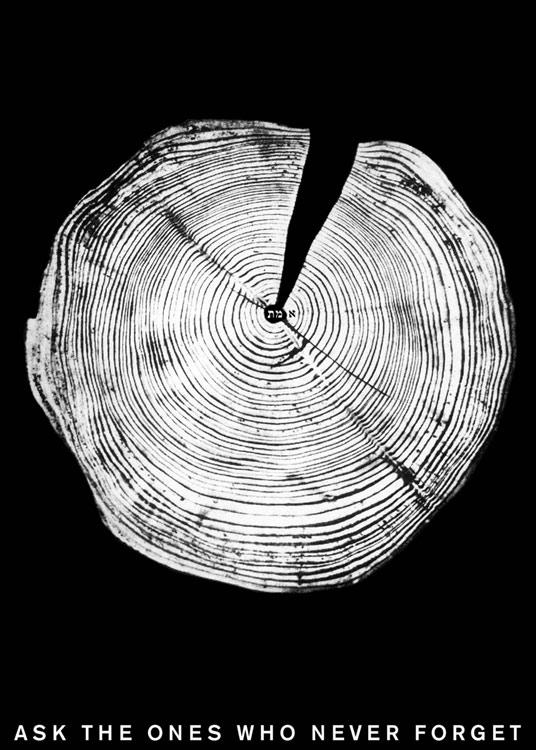Here, there is a misunderstanding between historic time and natural time.
The rings of the tree always hold the memory of the past, and I noticed that often, former concentration and extermination camps are located in forests. To quote an old Jewish wise man, “we don’t cut the tree to have a fruit”.
The poster is paradoxical since there is a reflection on the fruits which will lead to a just memory. On the outside, the tree’s years, emotions, and tragedies disappear. All that is permanent resides in the fact that cutting a tree represses the echoing of the irreparable crimes of the Nazis.
The Hebrew writing in the center of the trunk tells the story of the Golem, in which Rabbi Loew writes the word “emeth” (truth), so that it could give him life. In order to take life away from him, he only deleted the first letter aleph, leaving meth which signifies death. Aleph (the letter of continuity) is found within the trunk, where the memory is inscribed. The truth resides in the act of remembering and above all, never forgetting these dramatic events.
The big notch in the trunk (which also gives the appearance of a clock) portrays for us the unique character of the Holocaust, a true rupture in history, a radical break, a unique event which took away part of man’s humanity. This notch also directs us to the Hebrew word written at the center which signifies death.







